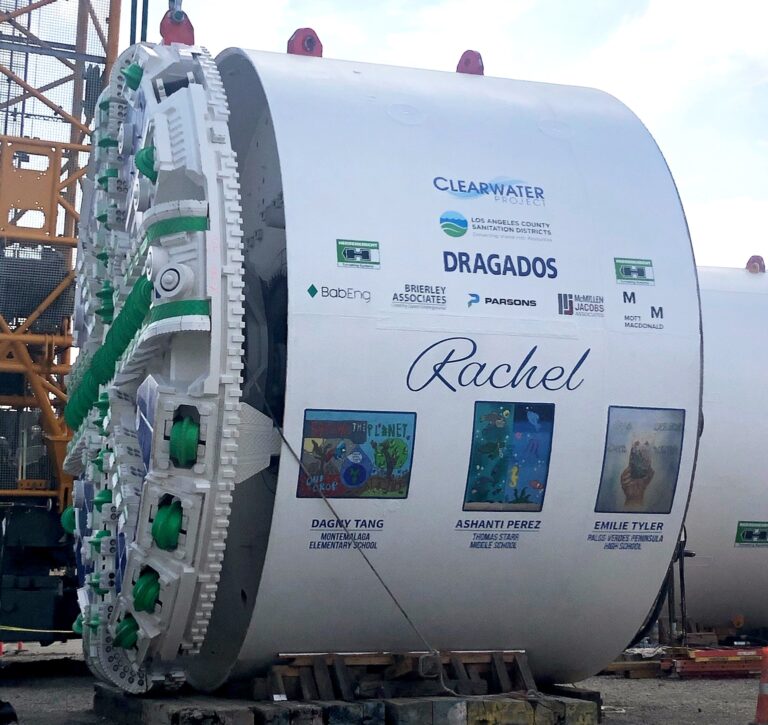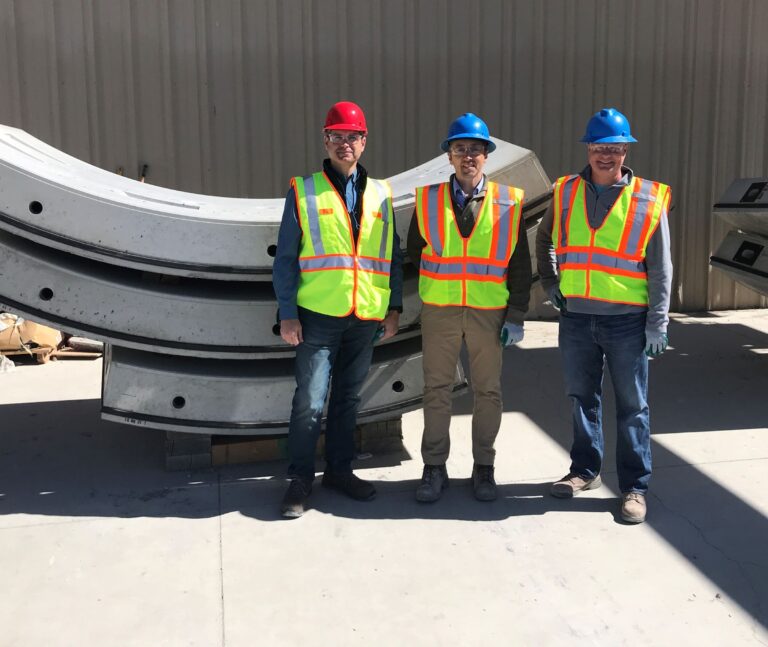
The Los Angeles County Sanitation Districts operate and manage 11 wastewater treatment plants, 47 pumping plants, and 1,410 miles of sewers all to serve about 5.6 million people. Treated wastewater is conveyed to the Pacific Ocean by two outfall tunnels, ages 60 and 80 years old. The tunnels, which cross two earthquake faults, cannot be taken out of service for repair and maintenance. In 2006, the Districts began planning, environmental studies and geotechnical investigations to develop alignment alternatives for a new outfall tunnel, built to current earthquake standards and with the necessary capacity to protect against overflows from major rainstorms.
Brierley Associates’ Sean Harvey, Dave Sackett, Patrick Smith, Nathan Stubley and Alan Howard were all part of the early on marine and land based geotechnical investigations that were crucial to understanding subsurface characteristics for the design and subsequent construction of this new vital asset. After several years of assessment, investigation, analysis, and regulatory approvals Los Angeles County Sanitation Districts has undertaken the Clearwater Project.
The Clearwater Project is being delivered by conventional design-bid-build methods and ground breaking occurred in 2019. Selected from over twenty-one options, the new tunnel will extend from the Joint Water Pollution Control Plant and connect to a manifold structure at Royal Palms State Beach. The total length of the tunnel is approximately 7 miles with a nominal internal diameter of 18-ft.
Excavation of the tunnel commenced in the fall of 2021 using a new Herrenknecht slurry tunnel boring machine named Rachel after Rachel Carson, author of Silent Spring. The TBM was launched from a sequentially excavated starter tunnel and corresponding tail tunnel at the bottom of a 55-foot diameter, approximately 140 foot deep shaft located adjacent to the Joint Water Pollution Control Plant.

Numerous geotechnical challenges will be encountered throughout the length of the tunnel. The deep shaft and first portion of the tunnel are encountering alluvial sediments consisting of silt, sand, gravel, cobbles and boulders below the water table. Further along the alignment, the tunnel will pass through two active fault zones, the Palos Verdes Fault zone and the Cabrillo Fault zone. The fault zones present their own set of challenges which may include the potential for squeezing ground. Eventually the geology will transition from alluvial sediments to faulted and uplifted sedimentary bedrock consisting of claystone, siltstone, and sandstone. Additionally, the tunnel alignment will pass through the Wilmington Oil Field, the third largest petroleum field in the United States, where naturally occurring hydrocarbons are anticipated to be encountered.
The contractor, Dragados, selected the slurry type of TBM to help mitigate many of these geotechnical challenges. A comprehensive automated geotechnical instrumentation program and real time monitoring of the TBM data have also been deployed to observe the performance of the TBM and the surrounding ground. The TBM has excavated close to 1,100 feet to date.
Brierley Associates served as a specialty tunneling/geotechnical sub-consultant beginning with the planning phase, continuing through final design. Today, Sean Harvey, Nathan Stubley, and Patrick Smith are providing construction management services to the Sanitation Districts in the lead geotechnical role. We’re providing interpretation and analysis of instrumentation data to assess TBM performance and ground behavior. Having real-time data allows the construction management team and the contractor to understand and anticipate ground behavior in order to adjust TBM operations to optimize overall performance.
Tunneling will take 4 years. The outfall tunnel is expected to be on-line in 2027. If you want to learn more, the District has a great website with photos, videos and an informative tour of the TBM, Rachel. Clearwater (lacsd.org)
